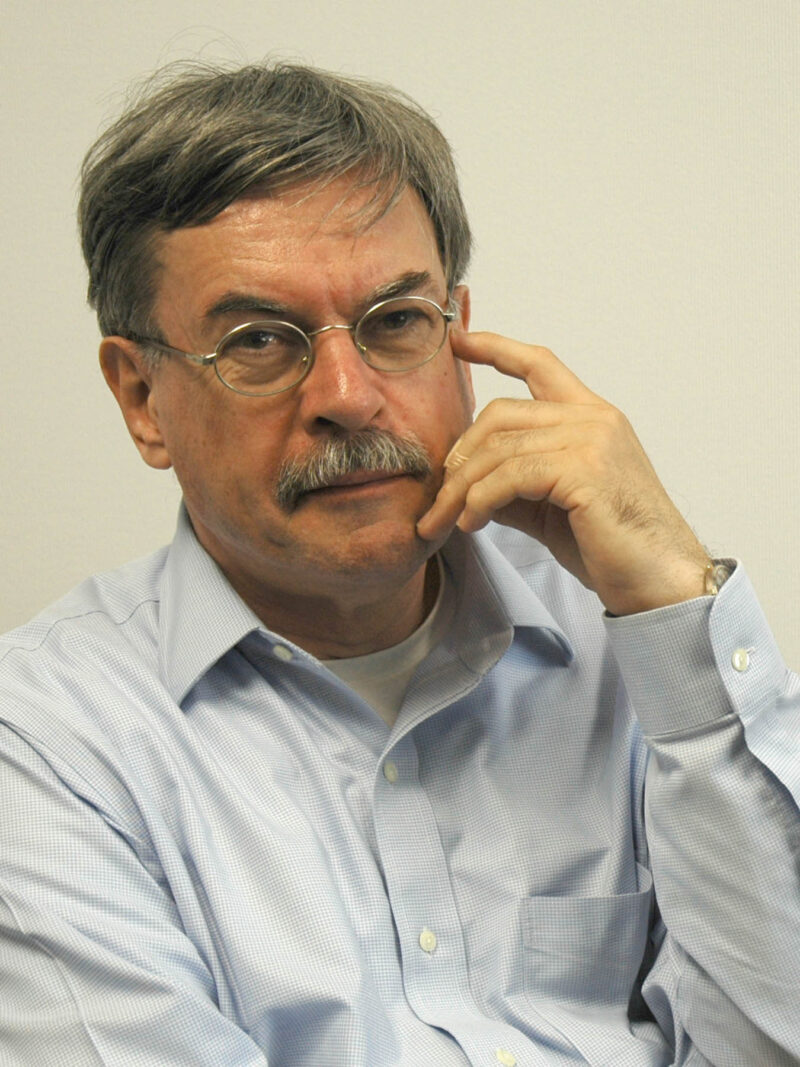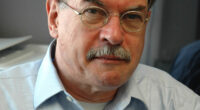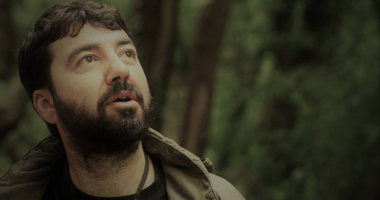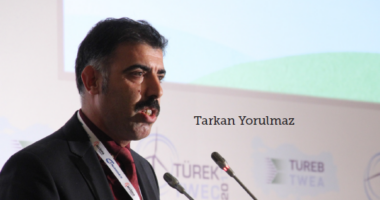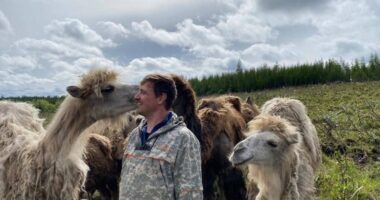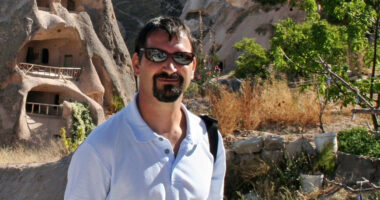Henk Ten Have
Bioethic Challenge of Pandemic Years
It cannot go without mentioning COVID-19 when having a conversation with such a prominent figure in Medical Ethics. As the pandemic has occupied the entire agenda of the year 2020, what were your projections particularly in your Global Bioethics work in UNESCO vis-à-vis such a scenario?
After the avian flu outbreaks in 2003 and 2004 (H5N1 influenza virus) affecting mainly birds and occasionally humans, and following SARS in 2003 (caused by a particular strain of coronavirus), the World Health Organization launched its Global Influenza Preparedness Plan, urging countries to make national bio-preparedness plans. Many countries made these plans in view of a deadly pandemic that experts warned will surely come. It is clear that the plans were simply forgotten when COVID-19 expanded over the globe. One reason perhaps is that serious pandemics would not be reasonably expected. In the meantime, we have had Ebola and Zika but they primarily affected a limited region and did not transform into global pandemics. Another reason might be that the focus at that time was first of all on biosecurity in a limited sense, fixated on the threat of bioterrorism. Anyway, this new infectious disease simply overwhelmed all countries, developed or underdeveloped.
What is also astonishing is that traditional public health practices have been forgotten. Public health over the last few decades has received little attention compared to biotechnological, pharmacological and clinical innovations. Expertise and staff have been reduced, and in numerous developing countries the public health system has simply collapsed as a result of austerity policies. One of the top ten causes of death in the world is tuberculosis. In 2017, 1.6 million people died from this disease. In that year, around 1 million children became ill with tuberculosis and 230.000 children died of tuberculosis. It is the leading killer of HIV-positive people. However, it is a curable disease that can be prevented. The disease is spread through the air. People with active TB can infect 10-15 other people through close contact over the course of a year. The common approach is to identify cases with comprehensive testing and case finding, followed by rigorous contact tracing, and in case of infection, isolation and quarantine. This is the best way to disrupt the chain of infection. It is not clear why this approach has not been followed with COVID-19. For some time, all confidence was invested in developing mobile apps but this proved to be more complicated, also infringing upon individual privacy. At least some countries have not waited for technological innovations but simply resorted to the traditional public health measures, hiring thousands of contact tracers. I have analyzed the moral challenges of emerging infectious disease before the occurrence of Covid-19 in my book Wounded Planet where I articulated the warning of many experts for a new deadly pandemic in the near future, and especially the neglect of environmental degradation and loss of biodiverty. This warning underlines the need for a broader approach in bioethics. This year I have been invited to make several prublications on the ethics of pandemics that are now in the process of review.
Obviously, no one was ready to hear the warning bells of the global pandemic when it first started to ring. However, just like a heavy rain that comes all of a sudden, first of all everyone rushed to a safe house, and then to their own house at the first chance they got. Thus, it seemed to be the end of international migration for the white-collar of the age of human and the core family was watching the world from the very same room, through the very same screen. Has this homecoming at the beginning of the third millennium started to make everyone question the hierarchy between and among human-beings and countries, and almost everything, based on the definition of Social Ecology by Bookchin?
This is the first time in human history that most of the world population is required to stay at home for an extended period of time. In some countries it is indeed confinement, giving people no choice. In many other countries it is ‘sheltering at home’, a voluntary choice that is made by the overwhelming majority of people, feeling responsibility for each other. At the same time, in many countries numerous people do not have a home or only a small apartment, while in many circumstances home is not really a shelter but a place of abuse and violence. This experience will deeply influence humans. It triggers loneliness, isolation and desperation, especially in older and ill people in care institutions who cannot receive visitors and see friends and family. At the same time, it encourages actions of solidarity and togetherness. The term ‘social distancing’ is wrong; what is requested is ‘physical distancing’ while in many cases emotional connectedness is growing. We are lucky to have today communication technologies that facilitate interpersonal contacts even if distanced. Staying at home also brings us back to the essence of human existence. It helps to escape from the world of abstraction with a bombardment of numbers (deaths, infected, and hospitalized) and to emphasize the significance of relationality.
The major ethical implication of the pandemic is the rehabilitation of the notion of common good. The overwhelming majority of the populations support measures to slow the spread of the virus even when they temporarily restrict individual freedom and hurt the economy. Even in the United States 70-90% of the people support these measures. The pandemic reinforces the awareness that already existed for some time especially in European bioethics, that individual autonomy is a limited and basically a relational notion. It can only flourish in a context that nourishes and sustains it. In various circumstances there are more important ethical considerations that override personal autonomy, and public health is one of them. The conflict between health and liberty is ancient. During the flu pandemic in 1918, the mayor of Pittsburgh ended swiftly a ban on public gatherings because of a coming election. The common good is not in opposition to individual liberty. Restricting freedom of movement not merely protects oneself but also shows social responsibility and solidarity since it does not expose fellow citizens to a deadly virus.
The pandemic experience is also rehabilitating the idea of ‘common home.’ Many new words have entered popular discourse: flattening the curve, herd immunity, patient zero, self-isolation, social distancing, lockdown, sheltering in place. Previously used in epidemiology, they are now disseminated to advance images of control and containment. They visualize the spread of the virus, what we can do to avoid infection and to become aware of the effects of our behavior. These images are associated with the war metaphor dominating current policies. This metaphor is associated with the older discourse of bio-invasion. Since the 1990s, many countries have developed policies to protect native biodiversity against invasive species. Non-native species are considered as aliens, enemies; we need to act to protect nature. The assumption is that nature and humans can be separated. Nature, and wildlife in particular is regarded as a source of danger. However, bio-invasion is impossible to prevent. When mobility and interconnectedness are the hallmarks of globalization, bio-invasion is a global phenomenon par excellence since borders are irrelevant. The same applies to new, ‘emerging’ viruses. Viral diseases have been with us since the beginning of humanity. They are now more easily disseminated through global traffic. The point is that these ‘new’ viruses do not simply ‘emerge’ as natural events. Their impact is the result of human activities.
Sheltering in place is a notion from the Cold War. When there is an imminent nuclear threat, people should take refuge in a small, interior room, lock all windows and remain indoors, or move to special shelters. This usually takes a few hours, not days or weeks. The concept is also used for biological and chemical threats, as well as for extreme weather events. The basic idea is to wait until the worst is over; then we can go outside and resume normal activities. It assumes a specific view of disasters: they are sudden events with immediate but often localized impact such as tsunamis and tornadoes. Pandemics, however, are gradual disasters; they have slow impact, and move across the globe, potentially affecting everyone. The difference is important for the degree of preparedness. Since pandemics come in waves, not all regions and countries are simultaneously affected. This leaves time for preparation. It also means that sheltering will be extended for weeks perhaps months, not knowing how long it will provide security.
During a pandemic, ‘sheltering at home’ seems a more acceptable term. It avoids connotations of mandatory quarantine or isolation. It is restricting freedom of movement but appeals to the responsibility of individuals. Contrary to shelter-in-place, sheltering at home is more lenient since it allows to go out for essential business and walking, keeping physical distance to other people. The notion of ‘home’ generally has positive connotations. In distinction to ‘place’ it is not a neutral location. It is where people live together in a space of intimacy and privacy, often regarded as a haven or refuge, a secure place to retreat and feel comfortable, a setting for caring relationships and conviviality. At home means more than residing in a specific place. Of course, not all homes are the same (e.g. nursing homes), not all homes are safe (e.g. domestic abuse), and not everybody has a home. Now that more than half of the world population is confined to their homes, philosopher Gaston Bachelard reminds us that being-at-home is more fundamental than activities such as working.
The new awareness of ‘home’ focuses attention on the planet as our common home. It is now more evident to more people that the pandemic is linked to the other major global threat of our time. While Covic-19 and its impact will be temporary, the impact of climate change is already there and will continue, requesting sustained action for a very long time. Both global threats are interpreted from a similar perspective: humans are not embedded in nature. The earth is a resource that can be commodified and exploited; it is not regarded as a living organism that creates and nourishes life (humans, animals and micro-organisms). That fact that many of us are now confined to our homes is hopefully an incentive to realize that we all share a common home. It demonstrates not merely interconnectedness of human beings manifested in society and culture but furthermore their embeddedness in the natural world of animals and plants. What affects the health of the planet will unquestionably deteriorate human health. Concepts such as ‘one health’ and ‘planetary health’ articulate the connection between health care and earth care. They make clear that the focus of bioethics should go beyond individual health, and that effective policies should be based on collective action. Given the interconnection between health and biodiversity, the notion of sheltering at our common home is most appropriate in the current circumstances. The earth is our home, as stated in the preamble of the Rio Declaration. Like all homes, this common home has dark sides, clearly noticeable today. But humans have no other dwelling place. Our actions can destroy this place but they can also turn it into a home where everyone feels safe and secure. Facing the Covid-19 pandemic is an opportunity to make ourselves at home in the world and to preserve our common home.
Perhaps, in the Globe, for the first time ever has medical ethics and environmental ethics been so interlocked. Nevertheless, do you think that humans, increasingly losing their rapport with rural life from a bio-cultural point of view, can make this questioning healthily as ideas deprived of sufficient amount of basic ecological knowledge and mainly coming from social media give start to a new generation activism?
Since years it is known that new pandemics will arrive, although it cannot be predicted when. Pandemics have been regarded as the most serious and likely global catastrophic risk for the future. In 2003, it was estimated that since 1980 more than 35 new infectious diseases have emerged in humans; one every eight months. Since then the list has only grown (SARS, Swine flu, MERS, Ebola, Zika). Most of these outbreaks have been localized but HIV, SARS and avian flue should have been warnings that globalization can easily occur. Already in 2005, the WHO launched its Global Influenza Preparedness Plan, urging countries to make national bio-preparedness plans, and many countries did. It is therefore astonishing how the Covid-19 pandemic overwhelmed countries, even more so since unlike influenza, no Covid-19 vaccines or antiviral agents are available, and primarily basic materials such as face masks and protective gowns, are necessary. The focus on preparedness, if taken seriously, is in tune with the military metaphor. If the emergence of disease threats is inevitable, the best strategy is to be prepared and to take preemptive action before the pathogens become an actual threat. There is little interest in prevention. Once the pandemic is expanding, attention will naturally concentrate on treatment and care, as well as the search for vaccines and drugs. Efforts will be directed at mitigating its effects rather than exploring its origins. Ethical statements (e.g. the UNESCO Statement on Covid-19: Ethical considerations from a global perspective) articulate the need to protect vulnerable individuals, the provision of correct information and the need for international cooperation and the importance of solidarity and protection of fundamental rights. What they do not mention is the necessity of primary prevention, and thus more awareness of the ecological perspective on health and disease.
